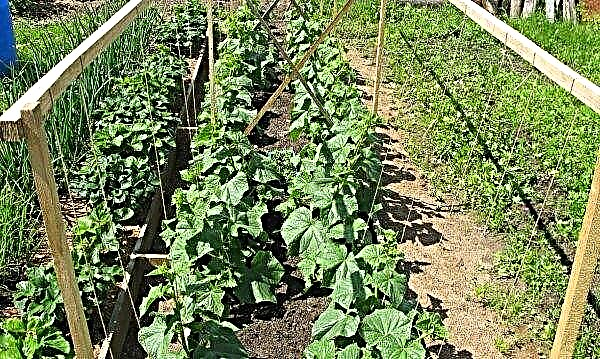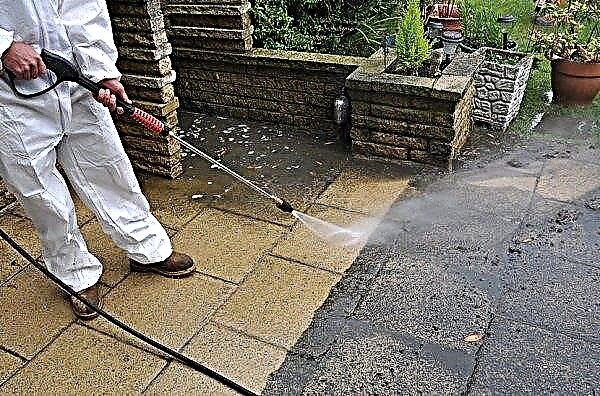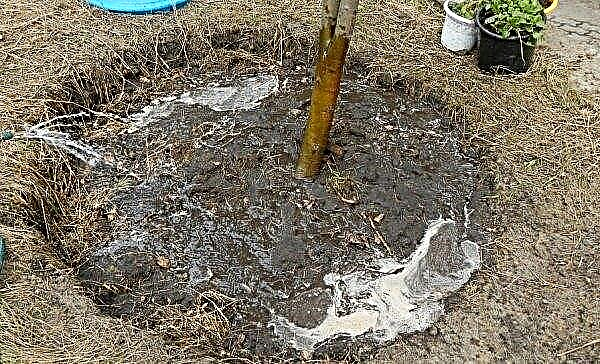The veranda not only allows you to increase the area of the house or country cottage, but also is an original design decision in terms of transforming their appearance. It’s great if the veranda is foreseen in advance during the development of the construction project, but often the idea of building such a useful exterior element comes to the owners of private houses after the construction of the entire house is completed, which greatly complicates the process. Only by familiarizing yourself with a number of nuances and features, listening to the advice of experienced people in this matter, you can begin to implement your plan.
Benefits of Building a Winter Veranda
The veranda is practically no different from the living room (it has a roof, walls, windows, foundation), except that there is no heating wiring in it.
Important! In modern verandas with glazing and underfloor heating, you can be in any weather and any time of the year.
- Therefore, the advantages of this extension are not much different from any residential part of the house:
- the ability to protect the owners and guests of the house from the weather (burning sunlight, rain, wind, snow);
- additional protection of the facade wall from negative factors;
- performing the function of a temporary storage room for things necessary in future that are not intended for storage on the street, especially if the house does not have an attic;
- the opportunity to better feel the unity with nature at any time of the year, to improve the positive impact on the psychological state (being on the veranda allows you to relax, forget about troubles);
- the ability to use as a full living room;
- a place for relaxation, New Year's holidays in the winter and other events in other seasons next to nature, without feeling the effects of atmospheric manifestations on the territory closed to them.

How to build a budget insulated veranda with your own hands
Sometimes over time, the needs of family members living in the house change, their number increases, and then there is a need for an additional office, bedroom, dining room. All these problems can be solved by an extension to a one-story house or existing insulation.
But every practical home owner wants to get not only a beautiful, comfortable and warm room, but also the cheapest at cost. Therefore, often a decision arises to attach and warm it with your own hands. To do this, you need to properly design an attached building, select materials, arm yourself with knowledge and experience in carrying out all types of work.
Plan and project of the veranda
If the presence of a veranda in the future house at the time of its construction is desirable, but not necessary, and in the future I would like to have this exterior element, then it would be more correct to design it together with the whole house. Only in this case, the building of the extension will stand on a common simultaneously flooded foundation, covered with a common roof, its walls will be erected from the same material as the whole house, so it will be distinguished by absolute strength and reliability. But it is not always possible to foresee and bring everything to life, therefore it is often necessary to separately carry out the design of the veranda if it is necessary to build it. And if you approach this issue thoroughly, then there is no doubt that the future extension will be no less reliable and durable, as well as being built with the house.
When starting to develop a building project for a house with a veranda or a separate veranda, you need to consider:
- architectural features of the house;
- relief of a personal plot;
- the junction of the extension to the house (corner, front, end) - each of the options should be a continuation of the house and be a harmonious part of the architectural ensemble;
- level of enclosure (open, closed, glazed);
- design features (built-in when the construction process will occur simultaneously with the house on a single foundation, or attached when it has its own foundation);
- shape (rectangular, round, semicircular, polygonal);
- entrance (from the street, from the inside of the house, from the street to the house - through);
- the location of the doors (with a through arrangement of doors, they should not be placed opposite each other to avoid drafts);
- extension area (its length is often the same as the length of the adjoining wall of the house, the width is from 3 to 7.5 m, the veranda should look harmonious and proportional to the dimensions of the house);
- type of materials from which you plan to build the extension and their volume.
When planning a large area of glazing in the veranda, it is necessary to provide ventilation methods in order to avoid the appearance of the greenhouse effect in the hot season. A system of removable windows can help when a closed room can also be turned into a summer terrace. If you need to insulate the house with a veranda, it is better to place it on the north side, the location of the extension on the east or west side will help to avoid constant sunlight. Also, when planning the veranda, you need to pay attention to the preferred directions of wind flows in the area.Important! If sliding doors are provided in the annexe, then, if necessary, an open room can be obtained from the closed veranda.

The annex windows are recommended to be displayed on the territory of their own, and not the neighboring plot. Professional implementation of the project ensures that during construction everything will be done correctly, and if necessary, documentation will not cause any difficulties.
Selection of materials and type of veranda
There is a wide variety of modern materials for building verandas for every taste. In the construction of all types of verandas, cement, sand, gravel are needed for the foundation, roofing materials for covering, window and door systems. The most presentable is an extension of the same material that the whole house was built.
The selection of other materials and tools is carried out depending on the type of design chosen:
- wooden;
- plastic;
- brick;
- polycarbonate;
- from metal siding;
- from aerated concrete;
- from foam blocks;
- from a natural stone.

To build a veranda of brick, stone, foam blocks or aerated concrete, you need:
- brick, foam blocks or aerated concrete blocks;
- a natural stone;
- cement;
- sand.

For the construction of an extension of natural wood you need:
- logs, timber;
- boards;
- Reiki
- parts for fasteners;
- special processing for wood;
- drying oil;
- varnish;
- roofing material.

It is an extension of brick, foam blocks, aerated concrete, natural stone or wood that is most suitable for the construction of a winter veranda. But for lack of extra funds, additional rooms and from other materials can look rather harmoniously in the ensemble with the house, they can also be insulated if desired. The most economical and uncomplicated for arrangement is a frame version of a metal profile sheathed with plywood, metal siding, plastic or OSB boards. To these materials should be added tools for metal processing and fasteners.
A polycarbonate extension is also popular, which makes it possible for those inside it to contemplate the surrounding nature. In addition, a polycarbonate material that effectively retains heat and has a relatively low cost can be used not only for walls, but also for roofs. Its thickness should be from 14 to 18 mm. Additionally, the same materials are needed as for the veranda based on a metal profile.Important! All materials requiring additional processing should be subjected to it even before the start of construction. After completion of the work, it will be more difficult to process.
Foundation building
A reliable foundation is the key to quality in the construction of any structure. For the construction of the veranda is often used columnar or tape views.
When choosing the type of foundation should be taken into account:
- soil moisture absorption;
- soil composition, its uniformity;
- freezing level;
- groundwater height;
- soil stability;
- the state of the wall to which the extension will be carried out;
- construction of the veranda.

Columnar
More often, a columnar foundation is built to extend the veranda to the house, making it possible to build it without reference to the foundation of the house.
Did you know? A record-high house built on a tree and consisting of verandas and terraces is a dwelling built by environmentalists on about. Tasmania in 2004 at an altitude of 70 m from the surface of the earth. They lived in it for more than six months in order to pay attention to the problem of mass deforestation of Australian forests.
When performing such a foundation, it is necessary:
- Dig holes for pillars with a depth of not less than 1 m and not less than the depth of the foundation for the entire house, taking into account the depth of freezing of the earth.
- At the bottom, form pillows from layers of rubble and sand.
- Pour the prepared concrete solution.
- Pillars for support on a concrete base: if the brick house is made of brick, if the wooden house is made of timber, if a frame extension is planned, metal supports or asbestos pipes are used.

For the construction of a small outbuilding made of wood, it will be sufficient to install pillars only in the corners of the room, for a more spacious veranda - additional pillars located in increments of 5 to 6 m are needed.
Important! If the veranda is attached to the house with a high base, then the room should be brought to its level.
Tape
A heavier glazed porch design requires the filling of a strip foundation.
Work execution order:
- It is necessary to dig a trench around the entire perimeter of the extension.
- Make the installation of formwork, it should be installed above the planned base level.
- Pour the formwork with prepared concrete.
- For the first time after pouring, wetting of fresh concrete in the foundation should be carried out with the aim of better and more uniform hardening.

How to build a wireframe
For the winter veranda, most often they build a frame of wood:
- First, lay a beam with a cross section of 10 × 10 cm or 18 × 8 cm on the supports below for strapping or logs with a diameter of up to 12 cm.
- At the corners, it is better to dock the beam using the dovetail method.
- To strengthen with nails or other devices.
- To expose racks for walls, those racks that are near the main wall of the house should be higher than others if necessary, the construction of a pitched roof.
- For the base of the glazing, you need to install horizontal bars.
- Finish the installation of the frame by installing the upper horizontal strapping, which guarantees the rigidity and reliability of the structure and is the basis for fixing the rafters.
- Additionally, temporary spacers should be installed to eliminate distortions in the frame system.

Roof construction
To install the roof, you need to clearly determine its type:
- single slope - the simplest and easiest to do design, for the device of which you need a bias from the wall of the house;
- gable - used in the case of an extension of the veranda with the narrower side from the front of the house;
- polygonal - a design that does not have restrictions in execution, but requiring, like other types, the presence of a slope for water flow.
Did you know? Not so long ago, a “dancing house” was built in Prague, consisting of two towers in the form of a cylinder, one of which is tilted in such a way that it seems that it is about to start dancing.
After the material for the roof is selected and the frame is built, it follows:
- Fasten to the upper frame of the rafter frame for a certain type of roof.
- Install roof lathing (for roofs made of metal tiles, slate) or solid flooring (for roofs made of flexible materials).
 The best option for the roof material is the same as on the roof of the whole house.
The best option for the roof material is the same as on the roof of the whole house.
Polycarbonate
Polycarbonate roofs are becoming increasingly popular for building a porch or covering a veranda. They allow you to observe the surrounding nature without leaving the room. Due to its high light transmission even in winter, polycarbonate helps to increase the temperature regime. Also, the material is not expensive. To equip polycarbonate roofs, a base from a metal profile is required. The rest of the installation is not particularly difficult. But it must be borne in mind that sometimes polycarbonate may not withstand the impact of hail, and cracks form on it.
From corrugated board
The next easiest installation is corrugated board. Roofs made of this material are more durable and reliable. Their installation is carried out on a wooden crate, with the device of which there is no need to maintain the same distance between the boards. Previously, for insulation, it is recommended to pull mineral wool or other insulation, hydro-barrier and vapor barrier insulation.
From metal
Metal tile is no less durable than corrugated board, but more expensive and difficult to install. It is also attached to a wooden crate, which, unlike corrugated board, must have the same pitch required for a particular pattern. All other operations are performed in the same way as when using corrugated board. The service life of high-quality metal tiles is long - up to 50 years.
From soft tiles
Significantly shorter service life (up to 15 years) is characterized by soft tiles. This is a flexible material requiring a solid wooden crate. Soft tiles are characterized by a relatively low weight, which simplifies its installation.
Did you know? According to the project of architect Safdi in Montreal, a house was built of 354 concrete elements in the form of a cube, in a seeming mess piled on top of each other. But the residents of this house somehow fall into their 146, absolutely suitable for living apartments.
Warming
The main task when warming the winter veranda is to create the most warm cocoon in it, especially in winter. Insulation of the roof during its installation is the first step to the general insulation of the veranda. It should also be insulated from the outside or inside of the wall using mineral wool or polystyrene boards. The material and the place of insulation is selected depending on what was used in the construction of the walls and what is planned for the further decoration of the facade.
An important role in the insulation of the veranda is played by the correct arrangement of the floor. First you need to line the moisture-tight layer from a special film, insulate with foam, which has a high density and only after that you can lay the decorative floor. But in modern realities, more and more owners of private houses while arranging verandas still make “warm floors”. They are mounted when pouring concrete screeds, therefore, such heating will not be appropriate for any veranda.
Important! If you do not plan to constantly live in the house, then it is better to connect heating based on electricity, not natural gas, otherwise the water in the pipes may freeze and break them.
Design inside
The design of the veranda, like any other room in the house, is a manifestation of the creativity of its owners. In this matter, the approach should be individual. It should take into account the size of the room, for what purpose it will be used more often, the location of windows and doors and many other nuances. Furniture is best placed along blind walls, tables and chairs - near or opposite the window, so that it is possible to observe the surrounding nature.
Using folding furniture will help to solve some problems with space, and placing home plants will enliven the room and give it coziness. Sometimes the simplicity, but the correct arrangement of furniture, interesting interior elements can turn an ordinary veranda into a place where you want to stay longer.
How to avoid construction mistakes
With the extension of the veranda, as with the construction of any structure, it is almost impossible to do everything smoothly without making mistakes. But you need to try to minimize them.
To do this:
- Do not spare time on getting to know the necessary information;
- seek advice from experienced craftsmen;
- Do not ignore the necessary documentation;
- choose the right materials and not save on them;
- critically evaluate their strengths if you want to build an extension with your own hands and, in case of doubt, hire professionals (sometimes such a decision will help to save a lot of money, nerves and strength).
Did you know? In the Netherlands, in Rotterdam, a green 19-storey “cactus house” was erected with many outdoor terraces, giving it an obvious similarity to a cactus. Almost a hundred apartments are inhabited by people.
Do I need to legalize the veranda
The construction of the veranda after the paperwork for the whole house is in fact its restructuring, therefore, requires official documentation.
To obtain permits for the extension of the veranda, you should prepare and submit to the architecture department:
- certificate of ownership of the land and the house;
- completed project of a house with a veranda;
- notarized consent of all family members registered in the house;
- application for registration.
The cost of services depends on the current legislation in the country.The veranda can be added without documentation, but when committing any acts (selling a house, renting, donating, inheriting), most likely you can not do without difficulties and additional unforeseen costs. Especially if the room has heating.
During the construction of the veranda, you should adhere to all the parameters and nuances indicated in the officially approved project. Since all unauthorized changes may, in case of case, cause a fine.
Important! Since the procedure for obtaining permits will require a lot of time, it is better to start it at least 3 months before the planned construction of the extension.
During the construction of the veranda, you need to believe in your own strength and know that nothing is impossible, the main thing is not to show haste and inattention to details. To get true pleasure from the creation of your own hands, you need to observe the general ensemble of the house and the unity of its style.












